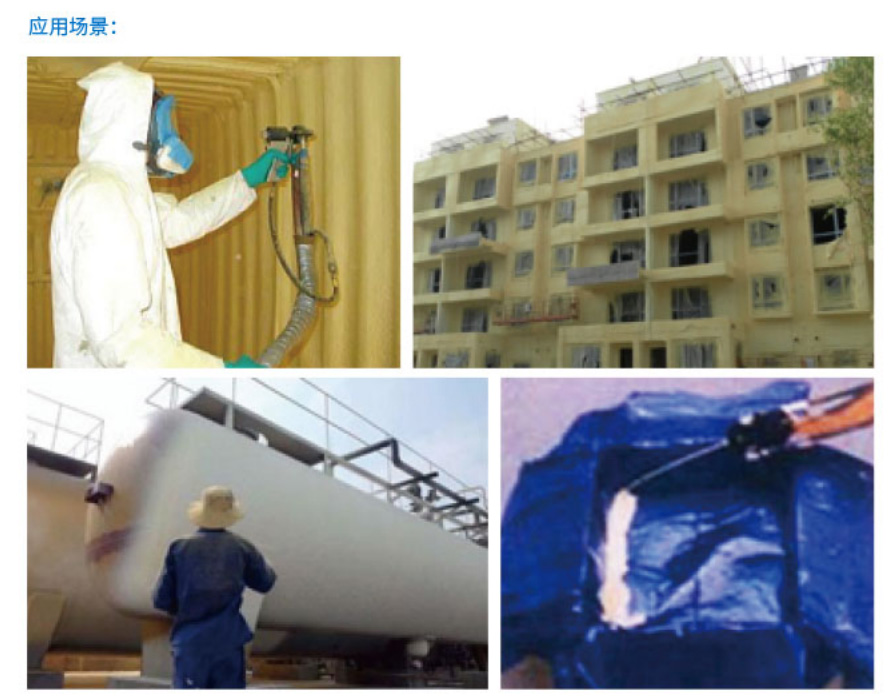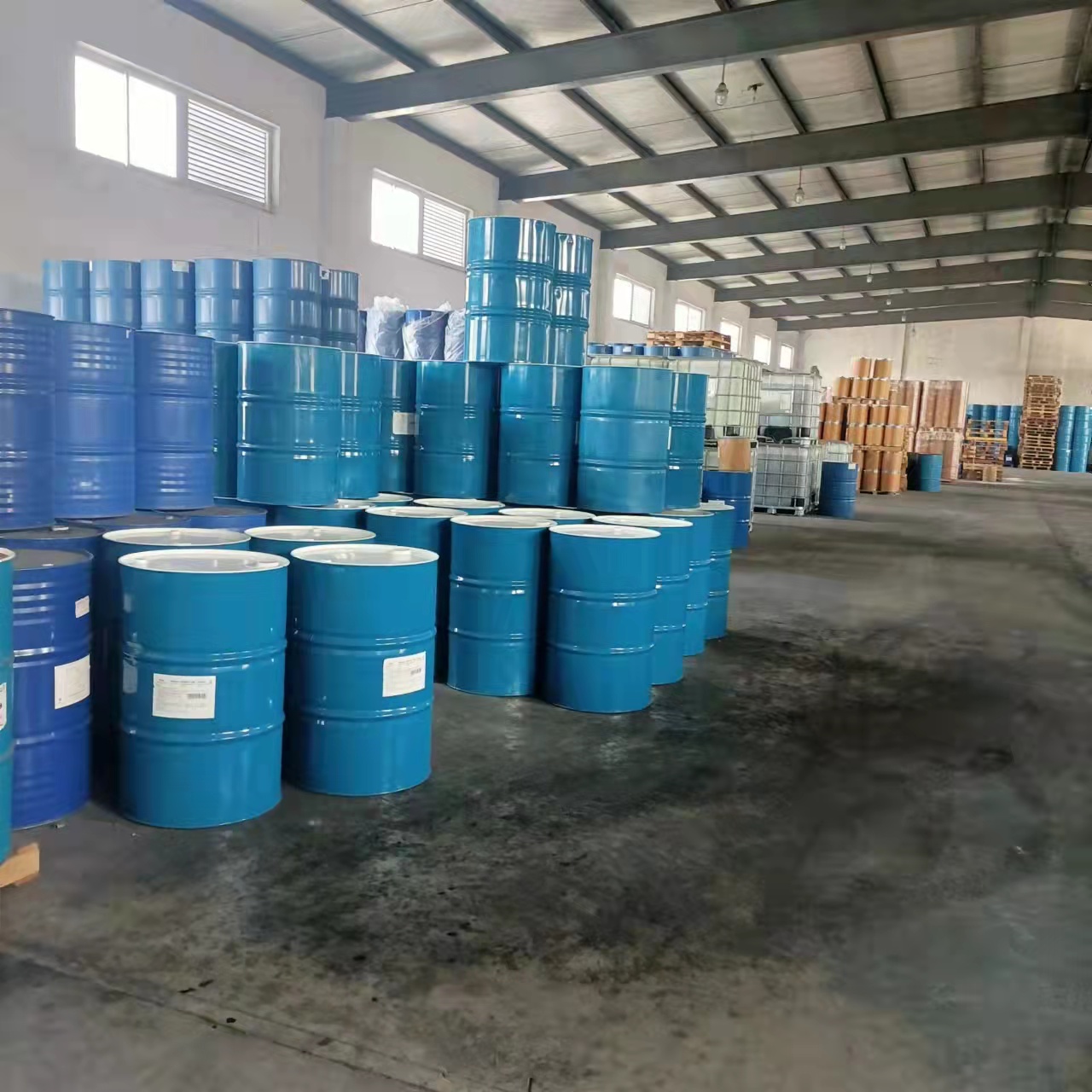In the future, we will try to explore less isocyanates, after all, not in our grassroots class can control the scope. More about polyether (ester) polyol, catalytic system, water/physical foaming agent combination dosage, process with. Anyway, idle is idle, after a hundred years most of the bones do not exist, but the text and word of mouth can leave a trace. No need to wind and snow, the book has its own face, foaming has its own dry technology.
Hard foam polyether polyol] functional degree f originally thought f ≥ 3 is the authentic hard foam, but in fact, it is not. Totally can use f = 2 polyester polyol or polyether polyol containing primary hydroxyl group to use as “white material”. Need to pay attention to: must use the trimer catalyst as the main catalytic system, water is used sparingly (can be quantitative), physical foaming agent (141B, cyclopentane, etc.) as the main means of adjusting the density.
[Rigid foam polyether] Our polyether is not good or bad on the quality, use, on the price. The price of the same series of varieties can sometimes vary by more than a thousand. The broadest spectrum of 4110 series is an amazing difference. In the end, or from the mainland compatriots eager for quick profits. Personally, I think: with glycerol starting polyether utility is obviously better, whether it is the final product of hard foam detectable indicators or storage resistance of the combination of materials, the applicable tolerance of the foaming process.

The sorbitol-started polyether series has relatively fine pores, good dimensional stability, and a lot of room for catalytic adjustment in foam production. Is now “low price is the king” era, sorbitol type polyether still will not fade out of the market. Some imitation wood products must also have this kind of polyether to do a good job. For example: realistic texture of high-grade mirror table, coffee table, gold picture frame, complex structure of the decoration.
Rigid foam polyether】”Sucrose type” polyether is highly respected for its rigidity and popular price. The initial 1050 is characterized by high hydroxyl value, high functionality, good hardness, good dimensional stability of the product, because of its own viscosity, to make the combination of poor foam fluidity, and other compatibility with the polyether poor mutual solubility, the product is brittle and coarse pore size, theoretically need to consume more isocyanate and gradually replaced by other improved mixed starting type sucrose polyether.
The best sucrose polyether I’ve seen is glycerol, viscosity 3000~4000, the factory was just opened not long ago, the production of the second chemical workers, regardless of the cost of “blind”, the PO is hanging a lot, I’ve used it for imitation wood, sterilizer, freezer, yacht filling, no complaints. The bubble pore fine, low viscosity, cold weather not powder, high and low temperature resistance are great. The good times are not long, that factory later opened.

The hard foam polyether] represented by 4110 sucrose type polyether are sucrose + diol start, most will choose diethylene glycol because of the cost. Such polyether viscosity can be smaller. But some 4110 varieties will be added with cheaper PET alcohol solution or simply on palm oil, etc. This kind of polyether to do ordinary filling, non-low temperature insulation, product deformation requirements of the lower aspects. Because of its “activity” will be significantly higher, with a catalyst to adjust its foaming fluidity will be difficult.
There is also a class of sucrose (molar) ratio is very high, viscosity is very large, hydroxyl value below 400 polyether, generally code 380, 360, do not see its high viscosity, foaming medium-term fluidity is excellent, suitable for refrigerators, freezers insulation layer. The compatibility with cyclopentane is relatively good. Use it as a combination of materials generally to add a small amount of viscosity of the smaller binary, ternary polyether (ester). Hydroxyl value below 300 sucrose polyether is also available, domestic manufacturers can not do

The polyether with low hydroxyl value (<400), low functional degree (f>4.0) and low viscosity (<5000) is suitable for wood imitation products. If the product requires thick skin, hard skin and overall toughness, this kind of polyether should be the first target. Glycerol-based small molecule polyethers 303, 305, etc. are also preferred auxiliary materials to improve the performance of wood imitation composites. Bifunctional 204, 210, 220 is also a common choice to improve the imitation wood system.
Hard foam polyether】403 is the most commonly used hard foam combination material “sauce”, ethylene diamine starting, can significantly improve the foam body of the fine density of the pore and the overall hardness of the product, shrinkage resistance, the shortcomings are too large viscosity, the combination of slightly annoying mix and match. The polyether started by urea is more rigid, and the bubble pore must be coarse, and the products are seriously powder brittle. But if used in the production of flower arrangements with “flower clay” but has a unique advantage: flower arrangement resistance is very small, almost no resistance toughness.
The hard foam polyester] we say the hard foam polyester including phthalic anhydride type, p-phenylene type, rosin type, generally bifunctional, there are also condensation with some glycerol to increase the functionality, it is said to be able to do 2.7. Because of the price issue, the amount of recycled PET alcoholic polyester is larger. The activity of this type of polyester is high, so the foam is less liquid in the middle and later stages. The small degree of functionality also leads to poor dimensional stability of foam products. But the flame retardant performance is good, slightly add flame retardant will be OK
In addition to polyether (ester) polyol, there are natural vegetable oil modified polyol that can be considered for the selection of hard foam white material. Castor oil, epoxidized soybean oil, palm oil, etc. Generally speaking, the polyol products with natural oils and fats are poor in shrinkage resistance, the only desirable thing is that their products have “soft” nature. And this kind of polyol and the compatibility of cyclopentane will be good. But the biggest function of hard foam is insulation, obviously I do not agree
Hard foam small molecules] ethylene glycol, diethylene glycol, propylene glycol, glycerol (tertiary alcohol), these can be used as a rigid foam combination of auxiliary components. Glycerol is useful in insulation spraying, imitation wood products “hardening”, other diols can balance the system of conventional “excess” (generally refers to -NCO excess). If it is molded products, and “thick skin” utility – of course, the amount of water in the system has to be careful, and not haphazardly added, thereafter a special section
Hard foam polyol with] In addition to the requirements of the rigid filling is not high, most practical applications require two or more polyol with the use. The principles are as follows: 1, to achieve the physical requirements of the application design (hardness, surface effect, shrinkage resistance, high and low temperature resistance, flame retardancy); 2, components (including small materials) compatibility; 3, the application of processing and construction of the process with; 4, the supply of raw materials time; 5, cost economy; 6, other special requirements.
【Hard foam polyol with】For the requirements of good foam flow combination material system (refrigerators and other long flow diameter, more bends), at least 70% of the components should be low activity, high functionality of polyether. To enhance dimensional stability, 403 such stiffened polyethers should be considered for placement. To reduce the viscosity of the combination itself (compatibility also affects the system viscosity}, should also consider adding a small molecule polyether such as 204, 303. Some polyesters also have similar effects
【Hard foam polyol with】For the system that requires the finished product to have fine pores, 403, aromatic polyester polyol, small molecule polyether polyol are good auxiliary choices. If it is imitation wood products, in order to prevent the positive surface of the product out of the bright package, dark package, pinhole, should give priority to the addition of 403; of course, in principle, imitation wood products “thick skin” can directly prevent the above defects, for this reason, the main polyether hydroxyl value should not deviate from the region of 360 ~ 500.
【Hard foam polyol with】If it is spraying, continuous automatic sheet system, aromatic polyester polyol will be of great use. 1, high activity, save the relatively expensive catalyst; 2, the foam is fine; 3, natural performance itself, as long as a little extra some flame retardant (such as TCPP) will be able to achieve more than 26 oxygen index; 4, the overall cost must be a lot lower than the polyether-based. Of course, to face with the idea of PIR foam, water should not be more.
【Hard foam polyol with】If it belongs to the production mode of the foam machine that is now used, usually difficult to be compatible with hard foam polyether 330N, 36/28 forced to join can bring unexpected results. The air holes on the surface of the products (especially the imitation wood) will be reduced, the skin will be thickened, and the products will be resistant to fall. There is also the practice of forcibly adding glycol and glycerin to the combination material, according to the different requirements of the products, the former slightly increase the hardness of the skin, the latter increase the overall strength.
Density of hard foam] The relationship between the density of hard foam free foam and the final product is as follows: ①, refrigerator and freezer 20~23 → 35~40; ②, cold storage spraying wall 21~25 → 35~42 floor 30~40 → 45~60; ③ intermittent cold storage board 23~28 → 35~42; continuous board 19~26 → 30~40 ④ imitation wood background wall 30~50 → 50~80, picture frame and mirror frame 65~100 → 200~400, line version 30~50 [hard foam density] according to different uses, the proportion of water/physical foaming agent inside the formula varies, the following said water dosage range %: ① refrigerator freezer 1.8 ~ 2.3; ② disinfection cabinet 1.3 ~ 2.0; ③ cold storage spray wall 1.3 ~ 2.5, ground 0.5 ~ 1.2 (with flame retardant to use more, PIR form of dosage less); ④ backdrop 0.3 ~ 1.0, line board 0.3~1.0, 0.2~0.8 for picture frames, 0.1~0.6 for home accessories; [hard foam density] ⑤ ordinary filling 1.5 ~ 2.0; ⑥ intermittent cold storage board 1.5 ~ 2.0; ⑦ continuous plate 1.5 ~ 2.5; ⑧ color steel tile insulation layer 2.5 ~ 5.0; need to be noted: if the products need to pay attention to the apparent hardness, the ambient temperature is low to prevent powder brittle, then the water as far as possible to use the low limit. The amount of water must be combined with the amount of physical foaming agent used, the composition of the catalyst, the temperature control of the foaming process in order to control the final finished product density. Hard foam silicone oil】Hard foam silicone oil assume the following functions: 1、The polyol, water, catalyst, physical foaming agent, flame retardant and other components are properly mixed together, so that the combination of material does not stratify very quickly. 2、It can make the combination of material and isocyanate evenly dispersed/fused together. 3、It can provide the nucleation center point when the combination of material and black material (isocyanate) starts to react; 4、It can make the nucleation air sacs grow when the nucleation air sacs grow. Stable air capsule wall without rupture and burst bubbles. 6、Some types of silicone oil can lead to partial opening of the hard foam products to achieve the dimensional stability of the products. Because the silicone oil is very targeted, such as: multi-water / less water system, polyether main part of different, physical foaming agent differences, catalysts and other additives such as flame retardants, the type of silicone oil used will be different. For example, cyclopentane type combination material, the selection of appropriate silicone oil, will make the solubility of cyclopentane to improve a lot. The more water, the faster it starts. There is an interesting phenomenon: the use of any one of the above alone is far less fast than the above three with the same milky white. 2, catalytic “-NCO/water” and “-NCO/-OH” ability is comparable, we can consider the “equilibrium catalyst “such as cyclohexylamine, dimethylbenzylamine 3、The main function is to catalyze “-NCO/-OH” and “-NCO” to trimerize into a ring by itself, which we call “late catalyst”. “. We also refer to those catalysts that cause “surface maturation of molded products to be completed as soon as possible” as “post-maturation catalysts.” A-33, delayed A-33, organotin, potassium organotitanate, DMP-30, etc. Generally, we use more than two different types of catalysts to achieve the perfect process. For all hard foam products, a small test is the most economical and quickest procedure to start. We generally treat all the polyol components as 100, and the specific composition inside is at your own disposal; then the shares of silicone oil, water and catalyst are all based on the 100 parts as the reference base. The physical foaming agent is based on the above combination, multiplied by a preset percentage. If there is a flame retardant, then add the total including the physical blowing agent. For example, polyether 4110-95 parts, polyether 403-5 parts, silicone oil-2.0 parts, water-1.2 parts, cyclohexylamine-0.8 parts, A-33-0.5 parts, and A-33-0.5 parts. 0.5 parts, physical foaming agent 141B-(100+2+1.2+0.8+0.5)×24%=25 parts, flame retardant DMMP-(100+4.5+25)×6%=7.77 parts. The above is a slightly complete formula, the actual application also take into account the ratio of black and white material, like the above situation, black: white = 1:1 that

